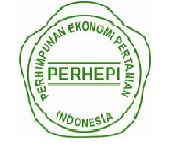Peningkatan Kualitas Emping Melinjo melalui Proses Pengepresan dan Penurunan Kadar Purin di UKM Emping Jago
Abstract
Keywords
Full Text:
PDF (Bahasa Indonesia)References
Amiruddin, S. (2021). The utilization of melinjo seeds as a raw material for kripik emping to encourage creative economic independence of rural communities in Banten Province. NVEO-Natural Volatiles & Essential Oils, 8(4), 5865–5876. https://www.nveo.org/index.php/journal/article/view/1252
Arsal, T. (2015). The involvement of women in the production of emping melinjo (melinjo chips) to improve the economy of rural farmer household. KOMUNITAS: International Journal of Indonesian Society and Culture, 7(2), 243–250. https://doi.org/10.15294/komunitas.v7i2.4720
BPS. (2020). Kecamatan Kartasura Dalam Angka. Badan Pusat Statistik Kabupaten Sukoharjo.
Dhafir, M., Zulfahrizal, Fadhil, R., Safrizal, & Setiawati. (2021). Desain dan uji kinerja mesin pemipih emping melinjo (Gnetum gnemon) tipe tumbukan. Jurnal Rona Teknik Pertanian, 14(1), 38–50. https://doi.org/10.17969/rtp.v14i1.19651
Fatah, K. M. A., Nelson, N., & Dalimunthe, R. (2022). Peningkatan omset penjualan melalui penerapan teknologi mesin pengering ramah lingkungan dan pemasaran online. Prosiding Seminar Nasional Penelitian Dan Pengabdian Kepada Masyarakat, 2(1), 16–22. https://doi.org/10.24967/psn.v2i1.1458
Kaneko, K., Aoyagi, Y., Fukuuchi, T., Inazawa, K., & Yamaoka, N. (2014). Total purine and purine base content of common foodstuffs for facilitating nutritional therapy for gout and hyperuricemia. Biological and Pharmaceutical Bulletin, 37(5), 709–721. https://doi.org/10.1248/bpb.b13-00967
Khairadini, F., Sunarti, T. C., & Anggraeni, E. (2020). The role of innovation in the development of melinjo chips agro-industry in Aceh. IOP Conference Series: Earth and Environmental Science, 472. https://doi.org/10.1088/1755-1315/472/1/012038
Kunarto, B., Sutardi, S., Supriyanto, & Anwar. (2019). Antioxidant activity of melinjo ketan (Gnetum gnemon L., ’ketan’) seed extract at various ripening stages and ethanol solvent concentration. International Journal on Advanced Science, Engineering and Information Technology, 9(4), 1344–1351. https://doi.org/10.18517/ijaseit.9.4.9376
Kusumayanti, D., Wiardani, N. K., & Sugiani, P. P. S. (2014). Diet mencegah dan mengatasi gangguan asam urat. Jurnal Ilmu Gizi, 5(1), 69–78.
Lioe, H. N., Syah, D., & Defriana, A. (2019). Reduksi purin pada emping melinjo melalui pre-treatment perendaman emping menta. Jurnal Mutu Pangan: Indonesian Journal of Food Quality, 6(2), 91–98. https://doi.org/10.29244/jmpi.2019.6.91
Nasrulloh, N., Arwim Nurcahya, W., & Marjan, A. Q. (2019). Aplikasi iradiasi sinar gamma untuk menurunkan kadar basa purin adenin dan hipoksantin emping melinjo (Gnetum gnemon L). Jurnal Ilmu Pangan Dan Hasil Pertanian, 3(1), 12–21. https://doi.org/10.26877/jiphp.v3i1.3365
Nilansari, A. F., & Wardani, S. (2021). Pelatihan pengolahan kulit melinjo sebagai camilan sehat untuk peningkatan pendapatan KWT Sejahtera Dusun Kepuh Kulon Desa Wirokerten. KACANEGARA Jurnal Pengabdian Pada Masyarakat, 4(1), 11–20. https://doi.org/10.28989/kacanegara.v4i1.710
Nugraha, F. A., & Ferichani, M. (2021). Analisis usaha industri emping melinjo skala rumah tangga di desa makamhaji kecamatan Kartasura kabupaten Sukoharjo. Jurnal Ekonomi Pertanian Dan Agribisnis (JEPA), 5(1), 98–106. https://doi.org/10.21776/ub.jepa.2021.005.01.09
Prasetyo, W., & Mariawati, A. S. (2013). Redesain alat pemipihan biji melinjo dengan pendekatan metode antropometri di UD. SARTIKA. Jurnal Keteknikan Pertanian, 8, 1–8.
Sanjaya, M. (2021). Packaging training for traditional emping melinjo crackers’ producers in Menes Village, Pandeglang Banten. Social Economics and Ecology International Journal (SEEIJ), 5(1), 6–10. https://doi.org/10.21512/seeij.v5i1.7367
Sari, M., Yanto, S., & Yahya, M. (2016). Pembuatan alat pengepres biji melinjo sebagai teknologi tepat guna untuk mengolah biji melinjo menjadi emping. Jurnal Pendidikan Teknologi Pertanian, 2, 22–29.
Sari, N., Soemardji, A. A., & Fidrianny, I. (2019). The effect of melinjo (Gnetum gnemon L.) leaves and melinjo peel extracts on induced-hyperuricemia male rats model. Journal of Medicine and Health, 2(4). https://doi.org/10.28932/jmh.v2i4.1840
Widodo, S., & Kalili, M. (2018). Evaluasi mutu biji melinjo (Gnetum gnemon L.) menggunakan pengolahan citra digital. Jurnal Teknik Pertanian Lampung (Journal of Agricultural Engineering), 7(2), 106–114. https://doi.org/10.23960/jtep-l.v7i2.106-114
Zakaria, M., Kamal, M., & Syukriah, S. (2020). Perancangan alat press biji melinjo dengan menggunakan metode Quality Function Deployment (QFD). Industrial Engineering Journal, 9(1), 19–25. https://doi.org/10.53912/iejm.v9i1.493
DOI: https://doi.org/10.20961/prima.v7i1.65486
Refbacks
- There are currently no refbacks.
View My Stats

This work is licensed under a Creative Commons Attribution-ShareAlike 4.0 International License.


.jpg)



1.jpg)











